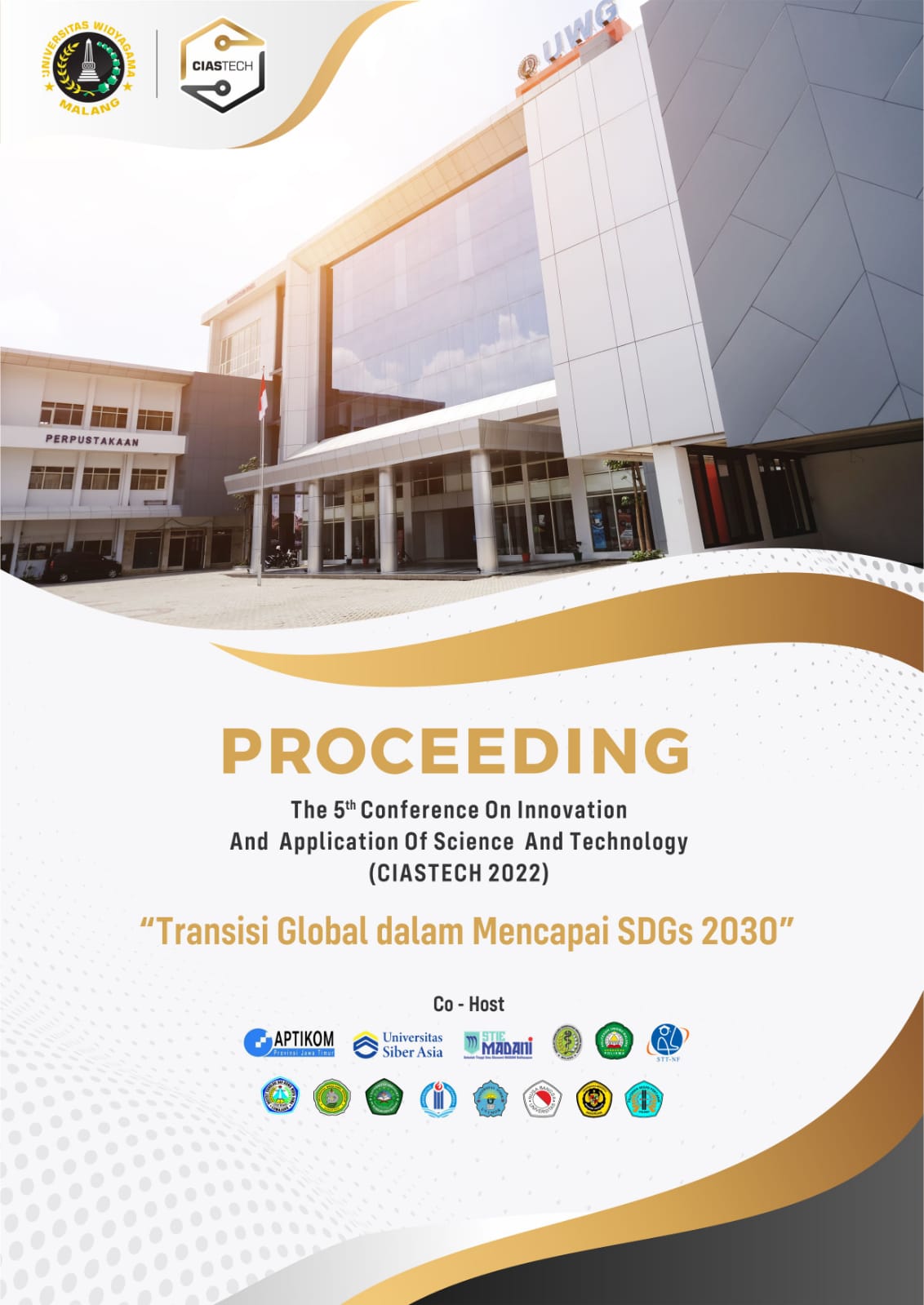IDEOLOGI LOCAVORISM: PENGARUHNYA TERHADAP PERSEPSI AUTHENTICITY DAN LOYALTY KONSUMEN MILENIAL PADA MAKANAN LOKAL TRADISIONAL
DOI:
https://doi.org/10.31328/ciastech.v5i1.4271Keywords:
Ideologi Locavorism, Authenticity, Loyalty, Makanan Lokal Tradisional, Generasi MilenialAbstract
Penelitian ini bertujuan untuk mengetahui hubungan locavorism sebagai idologi pangan lokal terhadap persepsi authenticity makanan local tradisional (MLT) dan loyalty konsumen generasi milenial pada MLT, sekaligus peran authenticity sebagai variable mediasi. Jenis penelitian eksplanatori (explanatory research) dengan metode analisis data menggunakan Structural Equation Model (SEM). Sample penelitian sebanyak 200 responden dengan menggunakan teknik purposive sampling. Hasil analisis menjelaskan bahwa ideology locavorism generasi milenial di Jawa Timur secara signifikan mampu mempengaruhi persepsi authenticity makanan local serta loyalitas mereka pada MLT di Jawa Timur. Selain itu, authenticity MLT juga secara signifikan mempengaruhi loyalty serta memiliki peran mediasi antara ideology locavorism dengan loyalty.References
Kemenperin. (2019). Industri Makanan dan Minuman Jadi Sektor Kampiun. https://kemenperin.go.id/artikel/20298/Industri-Makanan-dan-Minuman-Jadi-Sektor-Kampiun-
Gurǎu, C. (2012). A life-stage analysis of consumer loyalty profile: Comparing Generation X and Millennial consumers. Journal of Consumer Marketing, 29(2), 103–113. https://doi.org/10.1108/07363761211206357
Smedley, C. (2010). Edelman_8095whitepaper.
Jatim.bps.go.id. (2017). Jumlah Penduduk Menurut Kelompok Umur dan Jenis Kelamin di Provinsi Jawa Timur. https://jatim.bps.go.id/dynamictable/2017/09/05/61/jumlah-penduduk-menurut-kelompok-umur-dan-jenis-kelamin-di-provinsi-jawa-timur-2016.html
Birch, D., Memery, J., & De Silva Kanakaratne, M. (2018). The mindful consumer: Balancing egoistic and altruistic motivations to purchase local food. Journal of Retailing and Consumer Services, 40(October 2017), 221–228. https://doi.org/10.1016/j.jretconser.2017.10.013
Lillywhite, J. M., & Simonsen, J. E. (2014). Consumer Preferences for Locally Produced Food Ingredient Sourcing in Restaurants. Journal of Food Products Marketing, 20(3), 308–324. https://doi.org/10.1080/10454446.2013.807412
Nie, C., & Zepeda, L. (2011). Lifestyle segmentation of US food shoppers to examine organic and local food consumption. Appetite, 57(1), 28–37. https://doi.org/10.1016/j.appet.2011.03.012
Kennedy, D. N. (2018). Neuroimaging neuroinformatics: Sample size and other evolutionary topics. Neuroinformatics, 16(2), 149–150. https://doi.org/10.1007/s12021-018-9379-8
Stanton, J. L., Wiley, J. B., & Wirth, F. F. (2012). Who are the locavores? Journal of Consumer Marketing, 29(4), 248–261. https://doi.org/10.1108/07363761211237326
Reich, B. J., Beck, J. T., & Price, J. (2018). Food as Ideology: Measurement and Validation of Locavorism. Journal of Consumer Research, 45(Walmart 2017). https://doi.org/10.1093/jcr/ucy027
Adiasih, P., Kristen, U., & Surabaya, P. (2015). Persepsi Terhadap Makanan Tradisional Jawa Timur : Studi Awal. 19(2), 112–125.
Creswell, J. W. (2014). Research Design: Qualitative, QuCreswell, J. W. (2014). . Research design Qualitative quantitative and mixed methods approaches. https://doi.org/10.1007/s13398-014-0173-7.2antitative. Research Design Qualitative Quantitative and Mixed Methods Approaches. https://doi.org/10.1007/s13398-014-0173-7.2
Onozaka, Y., & McFadden, D. T. (2011). Does local labeling complement or compete with other sustainable labels? A conjoint analysis of direct and joint values for fresh produce claim. American Journal of Agricultural Economics, 93(3), 689–702. https://doi.org/10.1093/ajae/aar005
Brian Halweil. (2002). Home Grown: The Case for Local Food in a Global Market. Worldwatch Institute, Washington, DC.
Lang, M., & Lemmerer, A. (2019). How and why restaurant patrons value locally sourced foods and ingredients. International Journal of Hospitality Management, 77(June), 76–88. https://doi.org/10.1016/j.ijhm.2018.06.015
Zhang, T., Grunert, K. G., & Zhou, Y. (2020). A values–beliefs–attitude model of local food consumption: An empirical study in China and Denmark. Food Quality and Preference, 83(December 2019), 103916. https://doi.org/10.1016/j.foodqual.2020.103916
Fine, G. A. (2003). Crafting authenticity: The validation of identity in self-taught art. Theory and Society, 32(2), 153–180. https://doi.org/10.1023/A:1023943503531
Kim, J. H., & Jang, S. C. (Shawn). (2016). Determinants of authentic experiences: An extended Gilmore and Pine model for ethnic restaurants. International Journal of Contemporary Hospitality Management, 28(10), 2247–2266. https://doi.org/10.1108/IJCHM-06-2015-0284
James H. Gilmore, B. J. P. (2007). Authenticity: What Consumers Really Want. Harvard Business School Press.
Kolar, T., & Zabkar, V. (2010). A consumer-based model of authenticity: An oxymoron or the foundation of cultural heritage marketing? Tourism Management, 31(5), 652–664. https://doi.org/10.1016/j.tourman.2009.07.010
Jang, S. C. S., Ha, J., & Park, K. (2012). Effects of ethnic authenticity: Investigating Korean restaurant customers in the U.S. International Journal of Hospitality Management, 31(3), 990–1003. https://doi.org/10.1016/j.ijhm.2011.12.003





